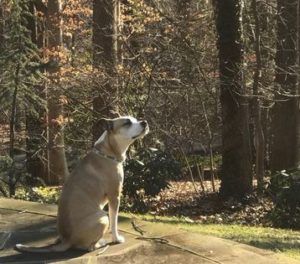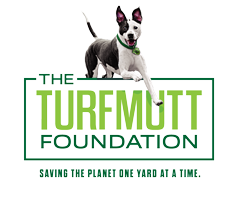Latest Posts
- Have a purpose when backyardingAugust 5 2021
- Study: Time outside alters our microbiomeAugust 4 2021
- Happy National Mutt Day from Mo-MoJuly 27 2021
- New home? Avoid these common mistakes in your yard.July 26 2021
- Infographic: Plan a backyard staycation this summerJuly 22 2021
Categories
Archive
January 26th
Mo-Mo knows living landscapes support the air we breathe

Mutt Mulligan – a.k.a. Mo-Mo – knows that getting outside and smelling the fresh air is good for us. When you spend time in the natural space of your own yard, you are doing something good for your mind, body and spirit. This is especially true in the era of the pandemic.
But did you know the living landscapes in our yards and community green spaces – the grass, trees and other plants around us –help clean the air we breathe? Here are just a few of the impressive ways our living landscapes make taking a big, refreshing inhale possible.
- According to a comprehensive study from U.S. Forest Service’s Northern Research Station, the nation’s urban canopies, which are home to an estimated 5.5 billion trees, provide roughly $18 billion in annual benefits through the removal of pollution from the air ($5.4 billion), carbon sequestration ($4.8 billion), reduced emissions ($2.7 billion), and improved energy efficiency in buildings ($5.4 billion).
- A 25-square foot area of turf supplies enough oxygen to support one person for a day.
- A turf area 50′ x 50′ produces enough oxygen to meet the daily needs of a family of four.
- Two mature trees provide enough oxygen for one person to breathe over the course of a year.
- One tree produces nearly 260 pounds of oxygen each year.
- In L.A. alone, trees remove nearly 2,000 tons of air pollution each year.
- Grass plays a vital role in capturing dust, smoke particles and other pollutants that harm people.
One last point about why living landscapes are so important. Without the oxygen-producing boost that plants such as grass, trees and shrubs offer, air quality levels will get even worse in drought-stressed areas that have programs promoting the removal of living landscapes.
To learn more, go to TurfMutt.com.





